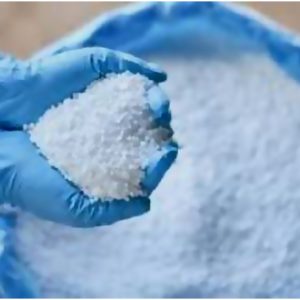
- Granular Urea
- Prilled Urea
- Technical Grade
Urea, also known as carbamide, is a safe, useful compound with a significant history. It is a naturally occurring molecule that is produced by protein metabolism and found abundantly in mammalian urine.
In 1828, the German chemist Friedrich Wöhler published a seminal article in which he demonstrated that a biomolecule, urea, can be synthesized from a non-biological starting material. Wöhler prepared the inorganic compound ammonium cyanate in the lab, then heated it, causing it to isomerize to urea. Now known as the “Wöhler synthesis”, the reaction helped to disprove the concept of vitalism, which held that “organic” molecules can be made only by living organisms. In a reaction similar to the Wöhler synthesis, ammonium carbamate can be converted to urea and water. This is the basis of the process that has been used to produce urea industrially for almost a century. Ammonia and carbon dioxide (CO2) react exothermically to produce the carbamate salt, which is then heated to form urea. The heat produced in the first reaction drives the second. Typically, ammonia and urea are manufactured in the same plant so that some of the carbon dioxide byproduct from ammonia production can be used to make urea.
Global urea production capacity is ≈220 million Mt/year. Why is urea produced in such large quantities? The answer is that, other than ammonia, urea has the highest nitrogen content of all industrial chemicals and is in high demand as a fertilizer. In the soil, it decomposes back to ammonia (actually ammonium ion) and carbon dioxide. Nitrogen-fixing bacteria oxidize ammonium to nitrate, which is readily taken up by the roots of crops. In addition to its high nitrogen content, urea is particularly useful because it can be applied as a solid in pellet form; and its unusually high solubility in water allows it to be incorporated into solutions with other plant nutrients.
More than 90% of urea production goes into agriculture. The remaining ≈20 million Mt made annually goes into animal feed (cattle, among others, can convert it into protein), urea–formaldehyde resins, emollients for skin care, and barbituric acid manufacture. Urea’s strongly negative heat of solution in water is the basis of instant-cold packs, in which plastic pouches contain urea and water in separate compartments. When the seal between them is broken, intermixing produces short-term cooling for aching joints and muscles.
Recently, in what might be termed a “Urea Revolution”, Scientists described an electrochemical route to urea.
Although urea is used widely in agriculture, current urea production is decidedly not “green”. Ammonia and urea production consume >2% of the world’s energy and emit more CO2 than any other industrial process. Researchers developed an electrochemical method that skips ammonia and directly converts nitrogen gas, CO2, and water to urea at ambient temperature and pressure. The synthetic route is complex, and the process is not yet efficient or sufficiently productive, but the objective is certainly well worth striving toward
